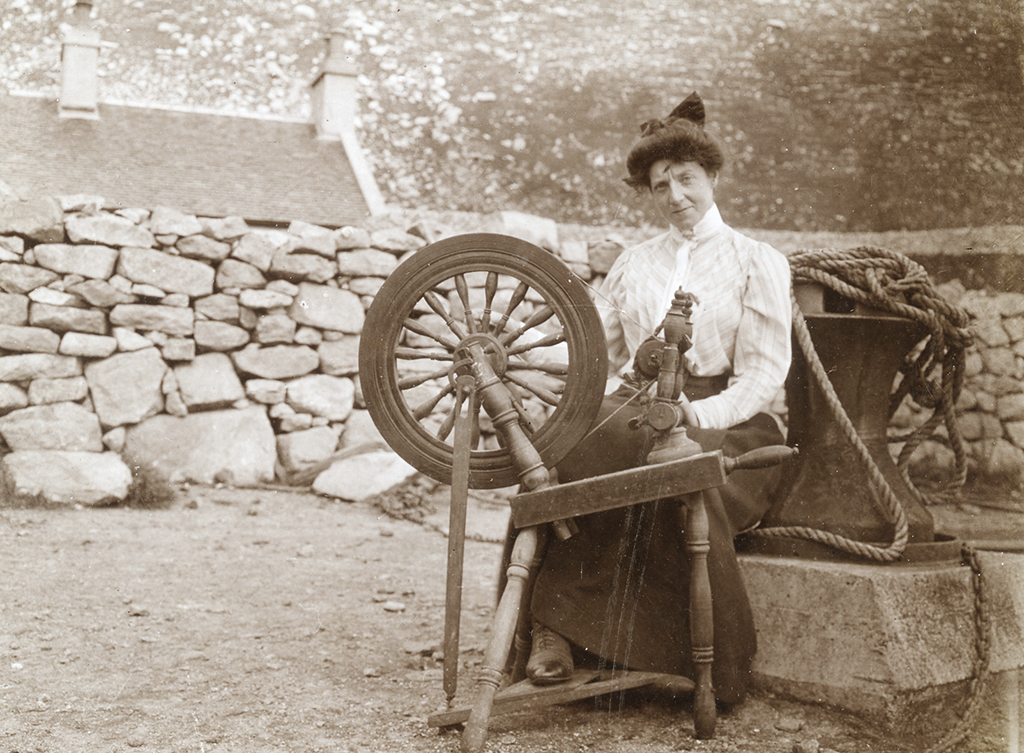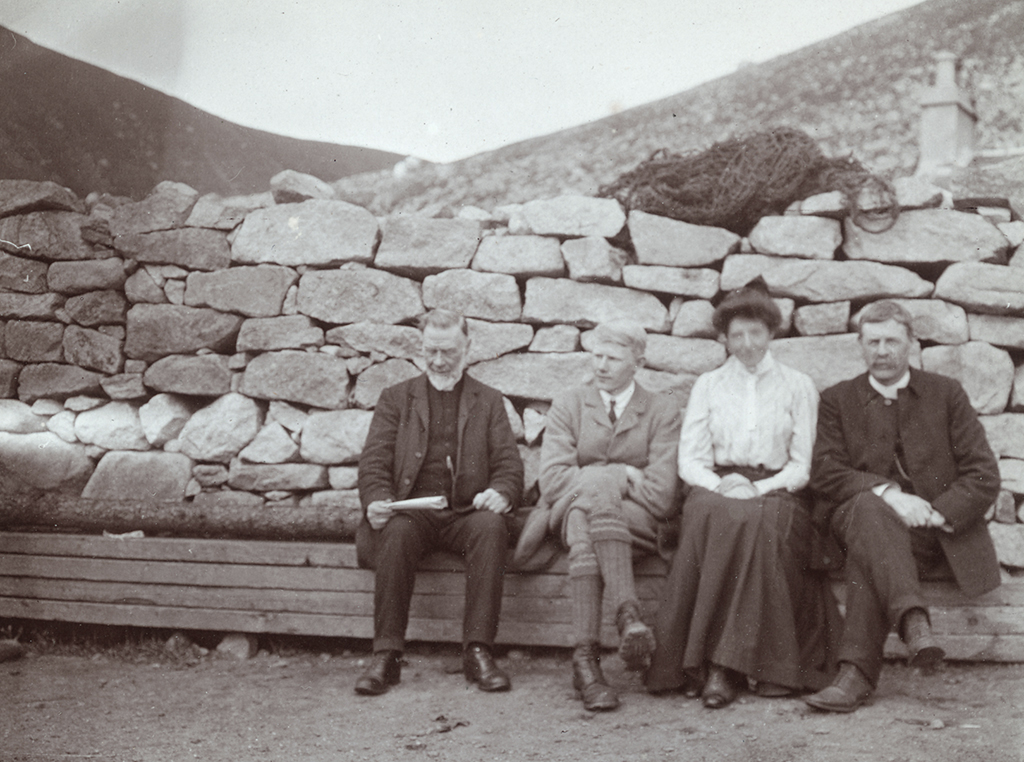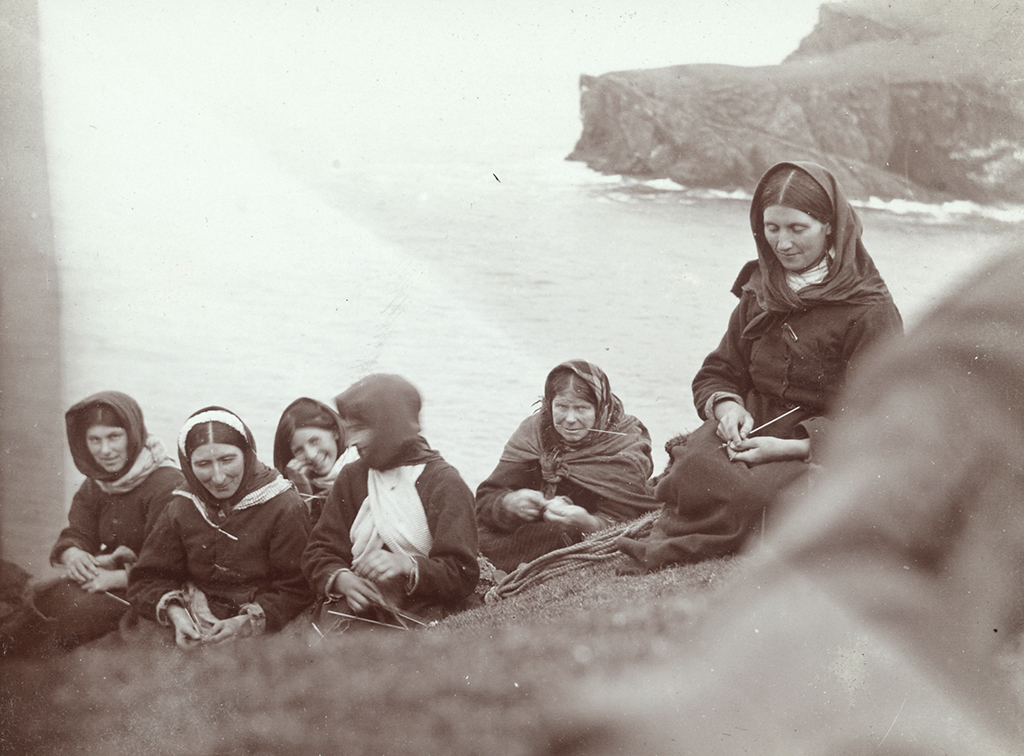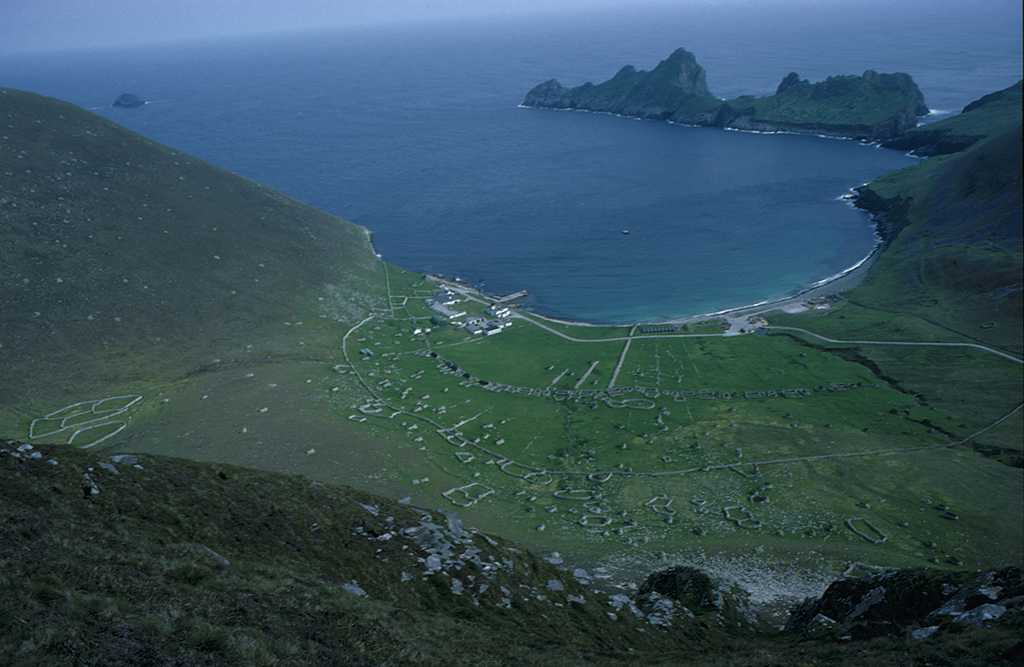St Kilda in the early 1900s is often painted as a dismal, forsaken spot, its residents desperate to leave, but the recently-published diaries of its minister’s wife depict a vibrant, resourceful community.
When 33-year-old Alice MacLachlan learned in January 1906 that she and her minister husband were being posted to St Kilda, it’s fair to say she was far from thrilled.
‘What a cheek!!!’ she wrote in her diary. But the couple soon settled into life on the island, where Alice taught in the little school. Now, three volumes of her diaries detailing her time on St Kilda are providing a unique insight into early-20th-century life in the most remote part of the British Isles.
Instalments of Alice’s diaries are being published on the National Trust for Scotland’s website every fortnight to mark the 85th anniversary of the St Kilda evacuation, when the last thirty-six island residents said farewell forever to their home. They offer a fascinating account of life on the rugged island group that lies forty miles west of the Outer Hebrides.

Alice MacLachlan at her spinning wheel on St Kilda
Finally abandoned in 1930 after being inhabited for thousands of years, St Kilda was home to a singular community that survived on a diet of fish and seabirds, the latter captured by hand on the islands’ precipitous cliffs and sea stacks. The islanders are said to have developed thick ankles and wide feet, with claw-like toes that helped them to grip the rocks. They used the oil from the fulmars to rub into aching muscles and burn in lamps.
Island life was a far cry from what Alice and her husband Peter (who is referred to throughout the diaries either by her nickname for him of ‘Duine’, which means ‘man’ in Gaelic, or simply as ‘P’) were used to on the mainland. The MacLachlans were living in the village of Garve, north of Inverness, where they spent ‘three very happy years’ enjoying their first joint position before learning that the manse was to be handed over to the Free Church of Scotland, and a new position would be found for them.
‘Very much depressed at receiving letter from our office in Edin. (Mr Lee) telling us to be prepared to leave the Manse at any time as the Wee Frees have got Church Manse,’ Alice wrote in her diary.
It wasn’t until May that the couple were told that they were being transferred to St Kilda. As this is the wildest and most remote corner of Scotland, it is hardly surprising that Alice had misgivings. In fact, the 80-strong community on St Kilda was enjoying a marginally better quality of life than previous generations.

Alice and Peter MacLachlan with visitors to St Kilda
St Kilda in the early 1900s was, relatively speaking, a vibrant, well-connected and economically successful place thanks to a booming tourist trade and a buoyant market for the island’s tweed. Whaling boats brought supplies of coal and the government was able to provide more services for the islanders – visiting doctors had spent the two weeks prior to the MacLachlans’ arrival vaccinating its residents – and the frequent presence of English fishing fleets meant they were better linked to the wider world than ever before.
Nevertheless, Alice and Peter’s arrival via the SS Hebrides on 16 August 1906 was met with a good deal of curiosity. ‘The men & quite a lot of the girls were on the Pier and all escorted us up to the gate of the Manse where Kate [the Manse servant] was waiting,’ Alice noted.
After an early inspection of the school (‘The children are very far back but answered fairly intelligently the questions about the poetry they had been learning during the year viz. “Waterloo”, and “Lochiel’s Warning”‘), the island’s newest residents set about meeting their neighbours.
In the 1830s, the people of St Kilda had spent two years building a new house for every family on the island. Known as ‘black houses’, these had rounded ends which faced Village Bay, with the doors on the other side facing away from the sea and wind. But less than three decades later many were destroyed by a terrible storm, which tore the thatched roofs from the walls. A stonemason was sent and 16 new, modern homes, each with two windows and a tin roof, were built between the remains of the old structures, which the islanders then used to house animals.

Six women from St Kilda knitting in the outdoors
When the MacLachlans arrived, all the islanders – bar one – were living in the 1860s homes. ‘We went first to see Rachel McRimmon (residing at Grazings 19) who is the only one who still lives in the same old house and would not have a new house. The hens just live in the same room. P. found her most intelligent and spoke very good Gaelic,’ wrote Alice.
The long-established families living on the island were navigating their way through a fastchanging world, yet day-to-day life remained largely unaltered. The men spent much of their time fowling among the rocks and cliffs for fulmars, puffins and gannets, which were harvested for their meat, feathers and oil, and divided up among the inhabitants. Sheep were caught and their wool stored in cleits (stone storage huts), with the spinning and carding of the wool a long-established tradition for both male and female islanders.
Attendance at church services was compulsory. Whaling boats were occasionally sighted and visits by ships bringing tourists to exchange goods with the St Kildans brought great excitement.
Alice’s entries throughout August detail how she and Peter met as many of the islanders as possible, got involved in the harvesting of the fulmars and endured their first few days of wild weather. Having come from the north of Scotland, the MacLachlans were hardly strangers to the cold and the wet, but things get rather more extreme on St Kilda, which endures gales for almost a quarter of the year. There were good days too. In one August entry Alice comments: ‘This has been a glorious day. The Dùn & the surrounding hills looked lovely in the sunset tonight.’
They gamely threw themselves into island life, despite the sense of isolation. ‘We have had no boats in the bay for three days & it looked very deserted,’ wrote Alice, adding that ‘we must get used to it, however, as we shall have many days without any boats in the bay.’
Gaelic was the main language on St Kilda, although Alice, originally from Haddington in East Lothian, was an English-speaker. She and Peter, who was from Tobermory, taught various lessons to the schoolchildren including English, music, history and sewing. Twenty two children attended the school during Alice’s years there; before her arrival, lessons had only been given when the children were not needed to help in the fields.

Village Bay on St Kilda
The couple settled into a routine of teaching, church services and visiting neighbours, as well as making a home. It was a democratic way of life in which people pitched in when they were needed. The diaries show that Alice also took on a nurse-type role in the community, attending the sick and dressing wounds when people were injured.
Tasks were decided and divided by the island’s ‘Parliament’, a meeting of the men of St Kilda that took place every morning outside one of the houses to discuss what should be done that day. The daily meeting was part of a group system of sharing jobs and necessary materials, such as ropes.
Alice kept a log of the daily happenings in her diary, which she completed most days, until the MacLachlans left the island in 1909. A number of entries refer to movements at sea, with post arriving sporadically by boat, while St Kilda was a prime spot for whaling. ‘Lots of boats in today,’ one entry reads. ‘One boat brought an enormous blue whale worth hundreds of pounds. It was longer than the whaler. The big Steamer came in from Harris & took the whale away & in the morning another whale was tied to the buoy.’
The couple’s only child, a daughter named Susan, was born on St Kilda in 1909, a few months before the small family left for the mainland due to Alice’s deteriorating health. Sadly, Alice died of a cerebral haemorrhage at the age of 48 at Acharacle, Ardnamurchan, on 12 March 1920. Susan Flora MacLachlan later trained to be a nurse and moved to Rhodesia.
When she died in 2000, her mother’s diaries were presented to the NTS, which owns St Kilda. Island life became harder in the years following the MacLachlans’ departure. In 1912 there were acute food shortages followed in 1913 by an outbreak of influenza.
Ironically, things improved with the war, which brought a naval detachment and regular deliveries of mail and food from naval supply vessels. But when these services were withdrawn at end of the war, the sense of isolation increased. Able bodied young islanders left for a better life, resulting in a breakdown of the island economy.
In 1930 the remaining 36 islanders requested evacuation to the mainland. They left at the end of August 1930, ending thousands of years of habitation on St Kilda.
TAGS

